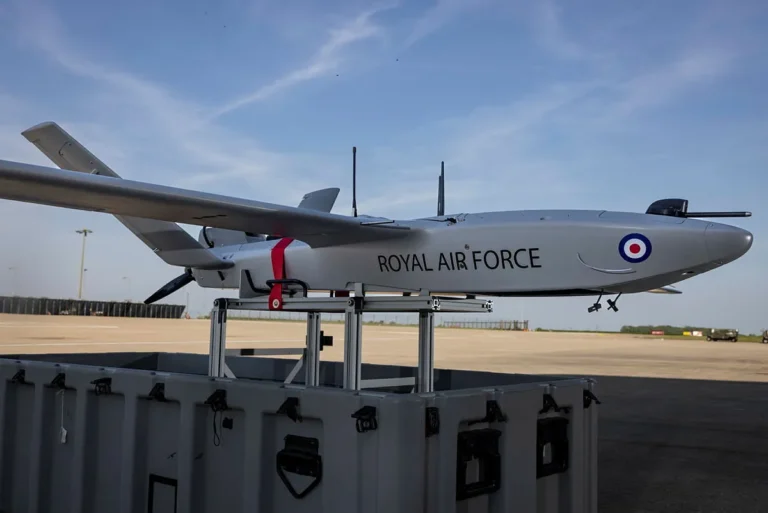Follow Us:

Share
Russia has taken a significant step in enhancing its battlefield capabilities with the introduction of a remote-controlled variant of the Kornet anti-tank guided missile (ATGM) system.
Developed by High Precision Systems, a key player in Russia’s defense industry, the advanced system has successfully passed all critical tests and is now ready for deployment.
The remote-controlled Kornet ATGM launcher is expected to bolster Russian ground forces as they continue operations in Ukraine. While exact details regarding its deployment remain undisclosed, speculation suggests that the system is already being used on the battlefield.
Additionally, the advanced ATGM launcher will be showcased at the IDEX-2025 defense exhibition in the UAE, where it will likely attract international interest.

A company spokesperson, as cited by TASS, stated that tests confirm the remote-controlled Kornet ATGM launcher delivers the expected performance. It is now fully capable of engaging both moving and stationary targets while utilizing automated detection and targeting systems.
This development follows Kalashnikov’s recent unveiling of a similar remote-control mechanism for the Konkurs-M ATGM, which allows operators to control multiple launchers remotely, significantly improving operational efficiency.
Originally developed by the KBP Instrument Design Bureau, the Kornet ATGM system has been a cornerstone of Russian anti-tank weaponry since its introduction in 1998.
Referred to by NATO as the AT-14 Spriggan, this missile system was designed to replace outdated Soviet-era wire-guided systems such as the 9K111 Fagot and 9K113 Konkurs. The Kornet provides enhanced range, accuracy, and armor penetration, making it a formidable adversary on the battlefield.
One of the key features of the Kornet is its laser beam riding guidance system, which ensures precision targeting. Although this method requires the operator to maintain a line of sight, it delivers exceptional accuracy against both stationary and moving targets.

The standard 9M133 Kornet missile is equipped with a tandem high-explosive anti-tank (HEAT) warhead, designed to pierce tanks fitted with explosive reactive armor (ERA). The missile boasts an impressive penetration capability of up to 1,200 mm of rolled homogeneous armor (RHA) behind ERA, making it highly effective against modern main battle tanks.
Russia has continuously upgraded the Kornet system, with the Kornet-EM being one of the most notable advancements. Unveiled at the Moscow Air Show in 2011, this variant significantly extends the missile’s range, allowing engagement of targets up to 10 kilometers during daylight and 8 kilometers at night.

The Kornet-EM introduces an automatic target tracking feature, giving it near fire-and-forget capabilities without requiring an onboard seeker, making it a cost-effective solution compared to its Western counterparts. Additionally, this model can engage two targets simultaneously, enhancing its effectiveness in dynamic combat scenarios.
One of the Kornet’s greatest strengths is its versatility in deployment. The system can be infantry-operated, with a two-man team carrying and launching the missile from a tripod. However, for greater tactical impact, the Kornet can be integrated into armored vehicles.
The Kornet-T variant is mounted on the BMP-3 chassis, offering a mobile anti-tank capability. This version includes automatic loading and can carry up to 16 missiles, enabling rapid engagement of multiple targets. Additionally, the Kornet-T can fire two missiles simultaneously, overwhelming enemy Active Protection Systems (APS).

The Kornet ATGM system has been widely used in various conflicts, demonstrating its battlefield effectiveness against Western-manufactured tanks. Its combat history includes deployments in Syria, where it was used by government forces against insurgents and their allies, and Ukraine, where reports suggest its use in engagements against Western-supplied tanks, raising concerns over Russian military exports. The Kornet has also been deployed in the Middle East, where various armed groups have utilized it against Israeli, American, and NATO-backed forces.
The Kornet ATGM has played a pivotal role in Russia’s ongoing military operations in Ukraine, where it has reportedly been used against Western-supplied tanks. Russian forces have successfully used the Kornet to destroy British-made Challenger 2 tanks in the Zaporozhye region.
According to Yevgeny Balitsky, acting governor of the region, the Kornet effectively penetrated the armor, causing one of the tanks to catch fire. Near Avdiivka, a Ukrainian M1A1SA Abrams tank was successfully targeted by a Kornet team, forcing the crew to evacuate. Multiple reports confirm that Kornet ATGMs have destroyed German Leopard 2 tanks supplied to Ukraine.
The Kornet-E variant, developed for export markets, has been sold to numerous countries worldwide. This model maintains the core capabilities of the domestic version but features modifications for ease of use and maintenance, making it attractive for international militaries seeking cost-effective anti-tank solutions.
Additionally, the 9M134 Bulat, a lighter version of the Kornet, offers a 3.5-kilometer range and is ideal for engaging medium-armored targets such as infantry fighting vehicles and armored personnel carriers.
The Kornet ATGM system remains a cornerstone of Russia’s anti-tank arsenal, offering an ideal blend of lethality, versatility, and cost-effectiveness. Its ability to adapt to different platforms and scenarios, along with its proven combat effectiveness, ensures that it continues to shape the landscape of modern anti-tank warfare.
With the introduction of the remote-controlled Kornet ATGM launcher, Russia is further advancing its defensive and offensive capabilities, reinforcing its commitment to maintaining a strategic edge on the battlefield. As global interest in the system grows, the Kornet’s presence in modern conflicts is set to expand, solidifying its status as one of the most formidable anti-tank weapons in contemporary warfare.
Share
Defense Feeds is publication focusing on informing, engaging, and empowering the world by providing accurate information from defense technology.
Powered by Defense Feeds © 2025 – All rights reserved.